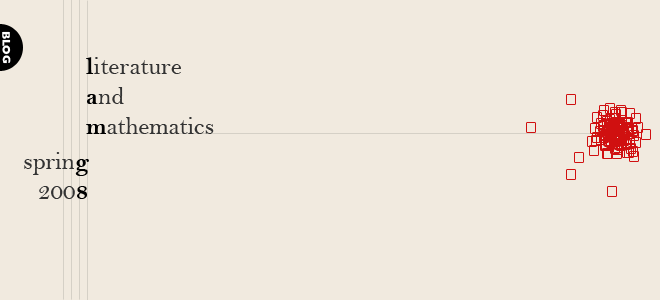Everything in the physical world has a pattern or is a part of a pattern. This is because the laws of physics places limits on the way things can act. For example, if I throw a ball in the air, it only has one option. It must fall. And, it does fall. Now a pattern is discovered (every thing that goes up, must come down). Patterns like this underlie everything in nature. There is a pattern to the way atoms bond together. There is a pattern to the way birds migrate.
One might say that this is not always true. One might bring up quantum physics. They might say that some things are impossible to have certainty about. A lot of things can only be gotten at by probability and statistics. But both probability and statistics are built on the assumption that things run in patterns. A random variable has no meaning if there is not a pattern in its nature. Look at the binomial count random variable when flipping a coin (# of heads). If we flip it 1000 times, we can expect to get nearly 500 heads. Increasing the number of flips will make the proportion of heads grow closer and closer to .5. Is this not a pattern? It is known as the law of large numbers. Ask the owner of a casino if he believes there is a pattern to the random variables that govern the gambling games that are played in the casino. Casinos wouldn't exist if patterns didn't exist in the realm of probability.
Wednesday, March 26, 2008
P Pa Pat Patt Patte Patter Pattern Patterns
Posted by
Kyle Caffey
at
12:54 AM
![]()
![]()
Tags: Patterns, physics, probability, random variables
Subscribe to:
Post Comments (Atom)

4 comments:
What about snowflakes? Some say that every snowflake is unique. Is there a pattern to thier shape as to predict what one will look like? Im sure someone can find patterns in anything, but how specific of a pattern?
I agree that you can find a pattern in everything if you are looking for it. The truth is that many patterns are trivial and too broad. (For example: 1,3,5,7,... There are several patterns present here. Some will help us complete the sequence, some won't help at all. "All are odd positive integers" is a pattern that helps us. "All are numbers such that when they are divided by 1 they equal themselves" is a pattern that is too broad to help at all.)
As far as snowflakes... It may be true that no two will ever be the same. But that doesn't mean there is not a pattern to how, when, and why they form. Think of it like recording 10,000,000,000 coin flips. One might say that if you do this several times, you will never get the same number of heads. This is because P(H=h)is approximately equal to zero for any natural number h. But there are still patterns. One pattern is that the proportion of heads to total flips will always be .5 approximately.
I kind of touched on this in my post but I agree that everything has some sort of pattern, regardless of how trivial the pattern may be. Even snowflakes have a pattern of falling from the sky and having their own unique shape, size and design.
I think in order to really determine whether there are patterns or not, we must first define a pattern with specific restrictions. Otherwise, you can broaden the sense of a pattern to include just about anything, thus finding patterns when you want to find them.
Post a Comment